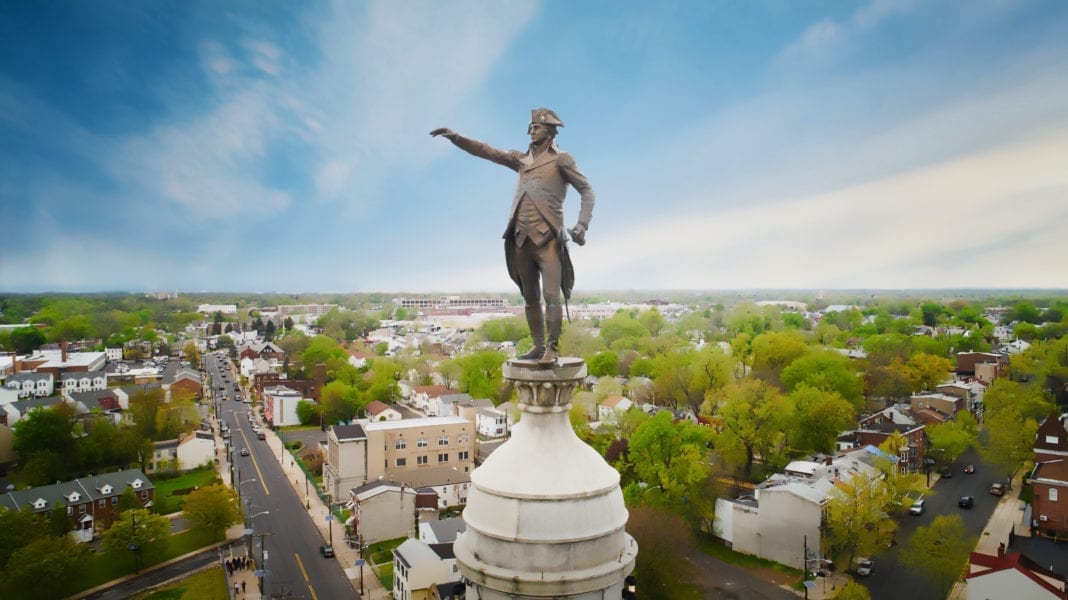For most Trenton residents, the Battle Monument stands out as one of our city’s most recognizable landmarks. But have you ever heard the story of how the monument came to be?
The Battle Monument was designed to commemorate the American victory at the Battle of Trenton, one of the most famous battles of the Revolutionary War. On Christmas night in 1776, Washington rallied his troops and crossed a treacherous Delaware River, ultimately going on to engage 1,500 Hessian forces. The victory in Trenton, closely followed by a victory in Princeton, signaled the war’s turning point and led to the eventual defeat of British forces. The Battle of Trenton is one of the first things that come to mind when people hear about the city, so it is no surprise that it would be remembered in such a meaningful way.
Fast forward over 100 years later, John H. Duncan, a world-renowned architect, would go on to create one of our city’s most famous landmarks to commemorate this victory. According to the New Jersey Department of Parks and Forestry, the monument “..is a triumphal column of granite 148 feet high. Considered to be an early example of the Beaux Arts style, it is a Roman Doric column with a large base John H. Duncan decorated with acanthus leaves. The capital has a ring of stars crowned by an observation platform with a railing. Above the platform is a circle of 13 electric lights, representing the 13 original colonies.”
One unique feature of the Battle Monument is the imagery of George Washington, who is poised to point toward the site of his victory. Washington’s triumph speaks not merely to winning a battle, but the start of a new nation. As Americans continue to fight for freedom and justice, Washington’s posture serves as a grand reminder of how far we have come.
The Battle Monument would go on to be unveiled on the 112th anniversary of the Battle of Yorktown on October 19th, 1893. As any history enthusiast will tell you, the Battle of Yorktown was possibly the most critical in the American Revolution. After a three-week siege, British forces finally surrendered at Yorktown, and the Americans were declared the victors. Upon British surrender, peace talks began and a new era of independence was born. We would then go on to sign the Treaty of Paris in 1783, officially signifying the completion of the war. As the Revolutionary War came to a close, the birth of a nation began anew.
When the statue was finally unveiled in 1893, after almost 50 years of planning, the monument was met with joy and celebration from the people of Trenton. There were speeches, and a parade and approximately 20,000 attendees were present. To this day, the monument remains an important historical site as well as a destination for visitors. A perpetual reminder of our beginnings, the Battle Monument serves to inspire hope and perseverance in the hearts of every city resident.
If you want to read more about the monument’s history or plan a visit for your family, please visit the State Park Service’s website here: NJDEP – Battle Monument
SOURCES:
https://www.state.nj.us/dep/parksandforests/historic/Trentonbattlemonument/worthy.htm
https://www.revolutionarywarnewjersey.com/new_jersey_revolutionary_war_sites/towns/trenton_nj_revolutionary_war_sites.htm
https://www.battlefields.org/learn/revolutionary-war/battles/yorktown
https://www.battlefields.org/learn/revolutionary-war/battles/trenton





